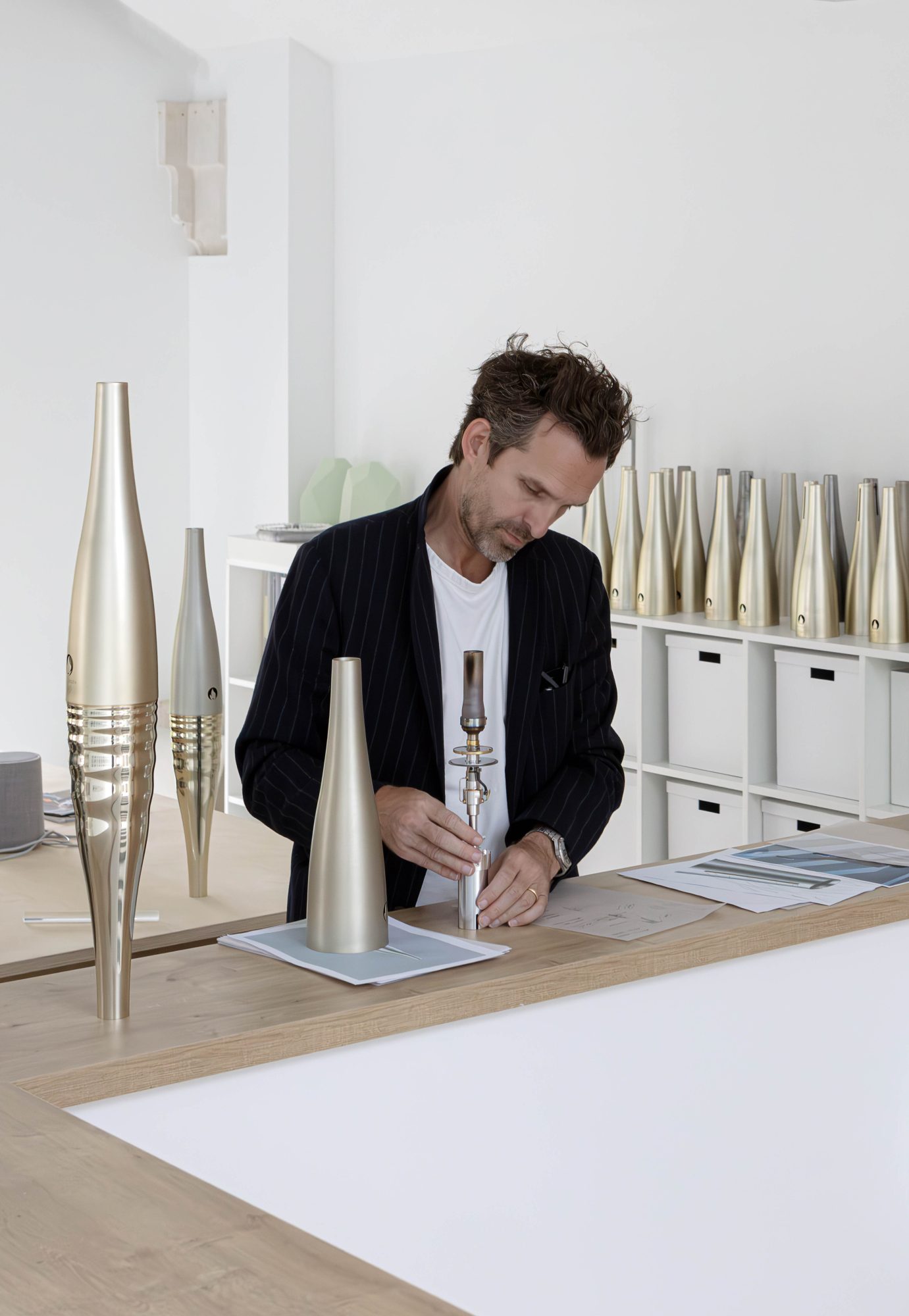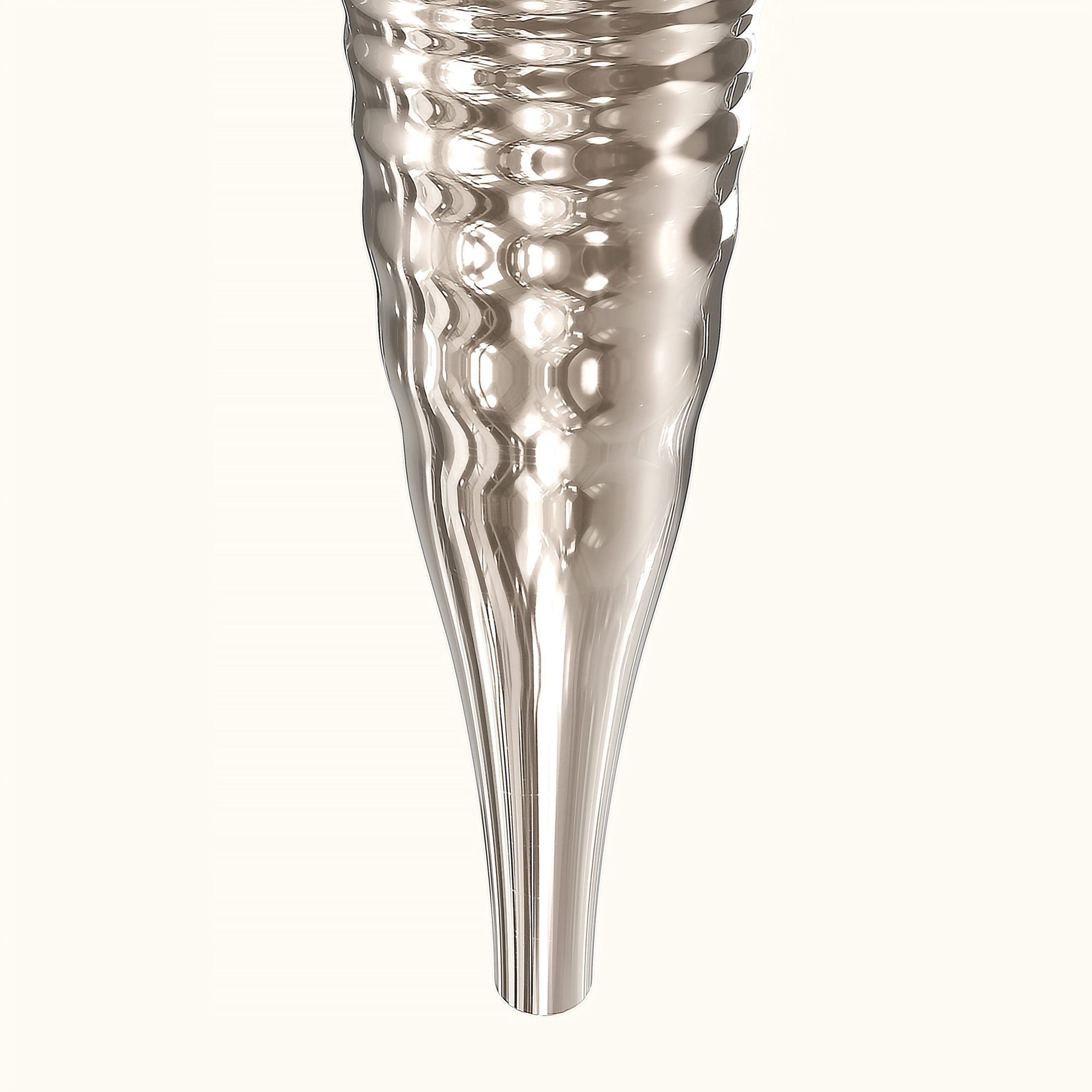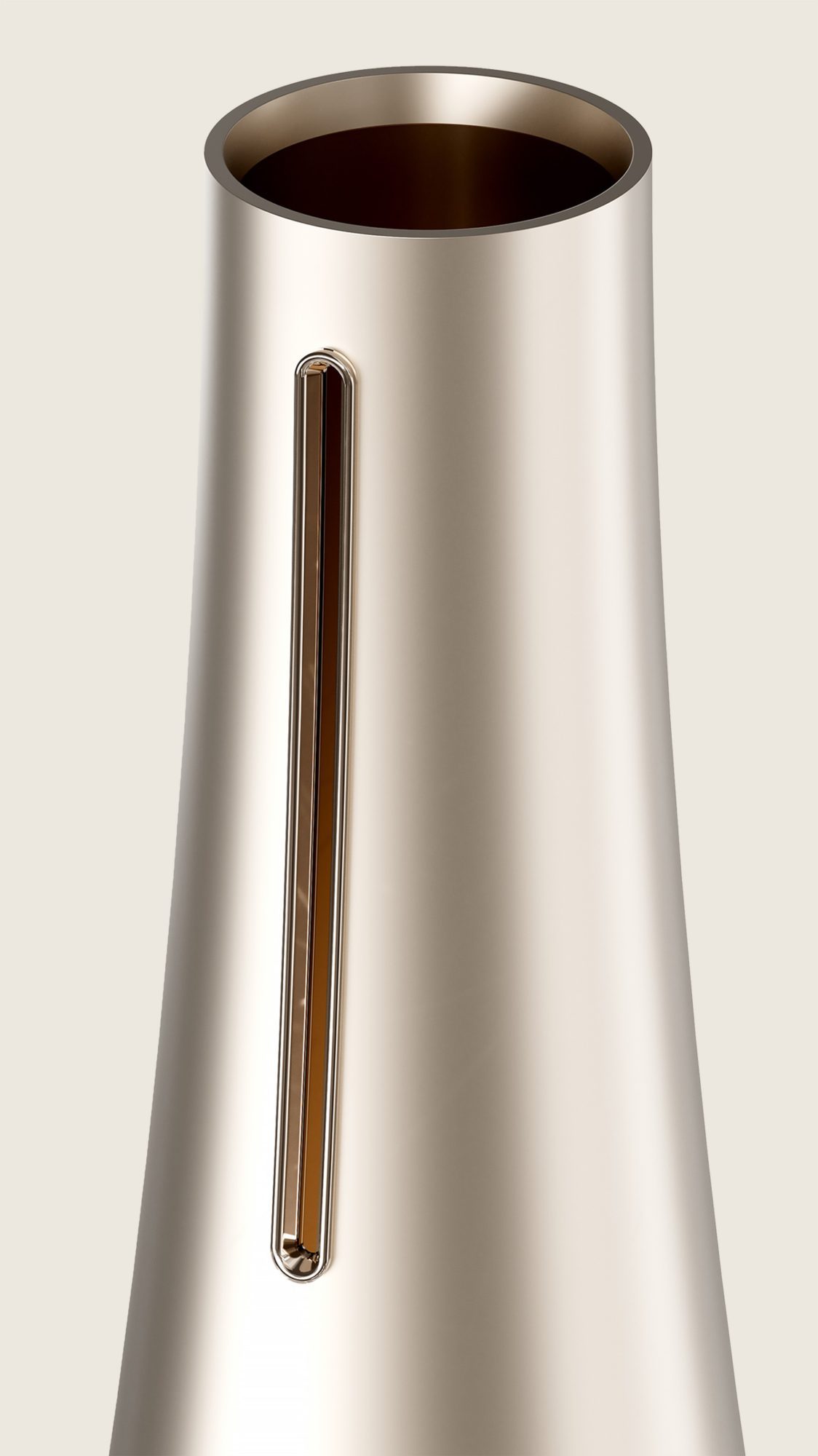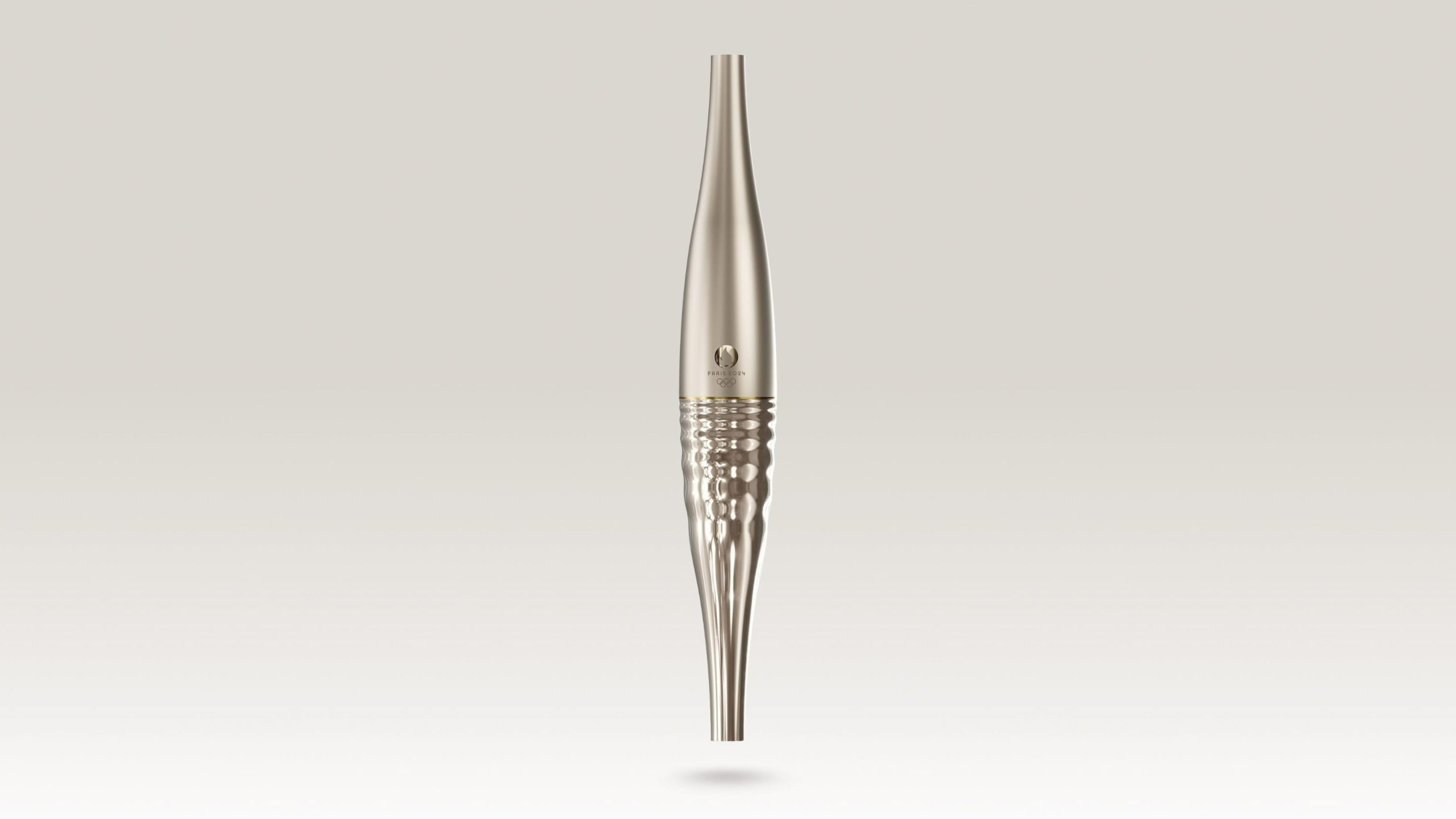When it comes to the art of making an entrance, few things set the stage quite like the Olympic torch. And for the 2024 Paris Games, the torch has been transformed into a masterpiece by French designer Mathieu Lehanneur. Known for his genius blend of science, nature, and artistry, Lehanneur’s portfolio reads like a veritable who’s who of design excellence. From groundbreaking home appliances to visionary public installations, his work consistently pushes the boundaries of creativity and function.
In our conversation, we sit down with Lehanneur to dive into his illustrious career and the inspiration behind his latest triumph, the Paris 2024 Olympic torch.


In 2022, the Olympic Committee selected your design for the torch from an open call. How did you approach the process of designing the torch?
Mathieu Lehanneur: When I heard that Paris was selected for the 2024 Olympic Games, I thought I wouldn’t be called to design the torch, but I wanted to design one anyway, even if just for pleasure. Luckily, I was called by the Olympic Committee for a competition with 10 or 12 designers. We each had a month to propose a design for the torch and cauldron. In December 2022, we presented our ideas to the committee, and two weeks later, I received the call that I had been selected.
What inspired and informed your design choices?
Mathieu Lehanneur: The Paris 2024 Committee decided to open the competition without any specific brief. They provided the philosophy of Paris 2024 and asked designers to interpret it. The only requirements were that the torch be 60 to 70 centimeters high, weigh between 1.2 and 2 kilos, and have a flame that remains visible. My first move was to delve deeply into the philosophy of Paris 2024. One of the key values was equality, as they wanted perfect parity between male and female athletes and equal importance for the Olympic and Paralympic Games. I wanted to embody this symbol of equality in a tangible way, which led me to create a symmetrical torch.
LISTEN: Canadian Olympic Committee David Shoemaker on the Unifying Power of Sport
I also wanted to reflect the Seine River, as the opening ceremony will take place on the river. Lastly, I wanted the torch to symbolize the anticipation of the Games, focusing on peacefulness, smoothness, and purity, rather than conquest or performance. Combining these elements, I created the final torch.
How did you want to challenge yourself as a designer in ways that you couldn’t in your previous work with this specific project?
Mathieu Lehanneur: The Olympic torch is one of the rare objects that will be seen by billions of people. My challenge was to create a dense, strong, and clear object with a personality that belongs to everyone. It needed to be understandable and memorable. I wanted a young kid to see the torch during the relay, be captivated by it, and then go home and draw it from memory. The torch needed to be attractive enough to catch attention and simple enough to be remembered.
The Olympics is associated with athletic greatness and exceptional design, from athletes’ uniforms to architectural monuments. What interests you about the relationship between design and the Olympics from your perspective?
Mathieu Lehanneur: It’s about being fully aligned with the philosophy of the moment and creating a symbiosis between the design and the Olympic Games. When the Games start, everyone will focus on the athletes and performances. The torch, cauldron, graphic design, and monuments won’t matter as much, but they serve as future souvenirs. I want people to remember where they were and what they felt when they see the torch years later. Good design for the Olympics should capture the essence of the moment and serve as a lasting reminder.


How important is it for you to have autonomy and agency over your work and to build your business the way you envision it?
Mathieu Lehanneur: When you work for someone else or another brand, you need to accept some change. It might be by millimeters or just a few details, but these changes can alter the final project. In music, if you create a song meant to last three minutes and 10 seconds and a company decides to remove the last 10 seconds for streaming reasons, it can change the whole piece. In design, it’s the same. For me, every single detail, even the invisible ones, are crucial to ensure the magic happens.
RELATED: Alysha Newman is Going for Gold in Paris 2024
I couldn’t [run my own agency] when I started my career or even ten years ago because it requires a different type of organization, investment, and risk management. We manage every step from creation to production to shipment, including the commercial aspect. We’re never sure if a creation will be a success or failure, but it will be due to our efforts. Success or failure, we learn a lot from that. If your creation is modified for any reason, you would never know if the lack of success was due to the design, price, storytelling, or retail strategy. That’s where the idea of autonomy solves this issue.
You’ve worked across various disciplines, from furniture design to leading the design team at Huawei. Ultimately, what is your overall design philosophy? What’s the throughline that connects your work across such a diversity of clients and projects?
Mathieu Lehanneur: When I applied to design school 22 or 23 years ago, I entered this field naively. I didn’t know anything about design and couldn’t name any designers. So, I arrived here randomly and started to understand what design is supposed to be. No one has given me a clear definition of design, and for me, that’s an opportunity. The only thing I learned and continue learning is that I’m supposed to create things for human beings. The first step is to understand deeply what a human being is. My work, regardless of the material or final use, always aims to speak to your brain and body. This is why I’m inspired by science and the medical field because they acknowledge the complexity of human beings. In my work, I try to make things that talk to your mind and body.


From your personal standpoint, do you use the power of design to solve problems or as a vessel for inspiration and beauty?
Mathieu Lehanneur: Unfortunately, I don’t think design can change behaviours or society, but it can support these changes. For example, people have suggested designers create tiny houses for the homeless. While I’m ready to do that, the issue is not whether designers can create tiny houses. The question is if the government will allow it, if the population will accept it, or if the homeless will want it. Designers are not gods who can decide what will be used by the rest of the world. It’s an ecosystem. Good designers notice changes in society and provide tools to support these changes. For example, in the 70’s, furniture designers didn’t decide to put people on low couches. They noticed society was changing and supported this change with objects that made sense for the new way people wanted to live.
You mentioned drawing inspiration from the human body and how we interact with the world. How long did it take for you to find your voice and identity as a designer?
Mathieu Lehanneur: I’m still working on it. Each project I work on helps me create a new design language or universe. It’s like putting needles on an Earth map, without trying to define a specific territory. Step-by-step, the consistency starts to become visible. I find it more interesting to work this way than to find a style and repeat it. When I work on different projects, like the torch or limited edition pieces for a collector, the contexts are different but the objects come from the same mind and hands. My goal is not to make people recognize my style but to achieve what we want to create in a relevant, smart, and sometimes beautiful way. We’ll see if it connects with previous or future projects.
What do you think entrepreneurs can learn from designers, and what can the business community learn from prioritizing excellence in design?
Mathieu Lehanneur: Entrepreneurs, designers, and scientists share the same brain and way of thinking. They combine things that aren’t supposed to be combined. I discovered this first with scientists and later with entrepreneurs. By collaborating, we realize there’s a natural way of thinking that connects us. The first lesson for entrepreneurs is to understand that they, like designers and scientists, have the ability to combine ideas creatively.













